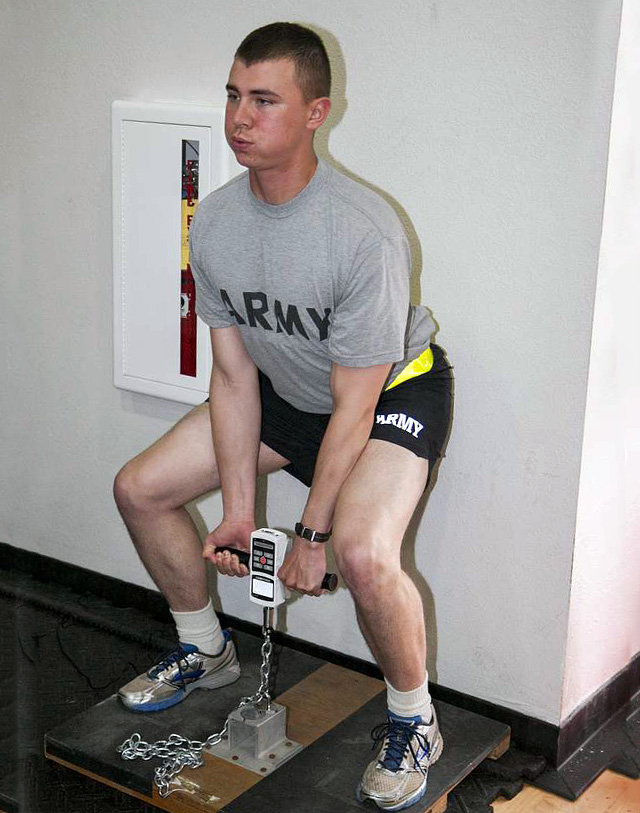The Mid-Thigh Pull Test (IMTP) is an isometric leg strength test. It is a test of maximal strength of the back and legs. Apparatus can be used to measure the maximum force applied. When this test is performed on top of a force plate, you can also measure peak force, relative force, rate of force development (RFD), time to peak force and other measures.
purpose: this test measures back and leg strength
equipment required: strength dynamometer, usually composed of a cable tensiometer, force plate (optional).
pre-test: Explain the test procedures to the subject. Perform screening of health risks and obtain informed consent. Prepare forms and record basic information such as age, height, body weight, gender and test conditions. Check and calibrate the equipment if required. See more details of pre-test procedures.
 Isometric Leg Strength Test
Isometric Leg Strength Test procedure: Make sure the dial is reset to zero before you start. Stand upright on the base of the dynamometer with your feet shoulder width apart. Let your arms hang straight down to hold the center of the bar with both hands, and with the palms facing toward the body. Adjust the chain so that the knees are bent at approximately 110 degrees. In this position your back should be bent slightly forward at the hips, your head should be held upright, and you should look straight ahead. Then without bending your back, pull as hard as possible on the chain and try to straighten your legs, keeping your arms straight. Pull against the weight steadily (no jerky movements), keeping the feet flat on the base of the dynamometer. Maximum performance will result when your legs are almost straight at the end of the lift. If not, adjust the chain length and starting position.
scoring: read the result from the dynamometer
advantages: this is a simple and safe test to perform.
disadvantages: it is only possible to test one person at a time. The equipment is not readily available
variations: different muscle groups can be tested by adjusting the length of the chain, and the degree of leg bend. When this test is performed on top of a force plate, you can also measure peak force, relative force, rate of force development (RFD), time to peak force and other measures.
note: An isometric muscle contraction is when force is applied to a static object so there is no movement at the joint.
Similar Tests
- Isometric Back Strength — hold a horizontal position while hanging over the edge of a bench for a set time period.
- Isometric Leg Extension (Groningen)
- Isometric Push-Up (Brockport) — the 'up' position is held for as long as possible.
- Isometric Push-Up Hold Test — the 'down' position is held for as long as possible.
- Isokinetic Strength Tests — strength tests using apparatus which limit movement to a constant speed.
- Vertical Jump Test


 Current Events
Current Events